Why the most iconic sight in Moldova won’t make it to the UNESCO list
It’s a landmark of a European country and a relic of human history, yet something essential is still missing from Old Orhei in Moldova.
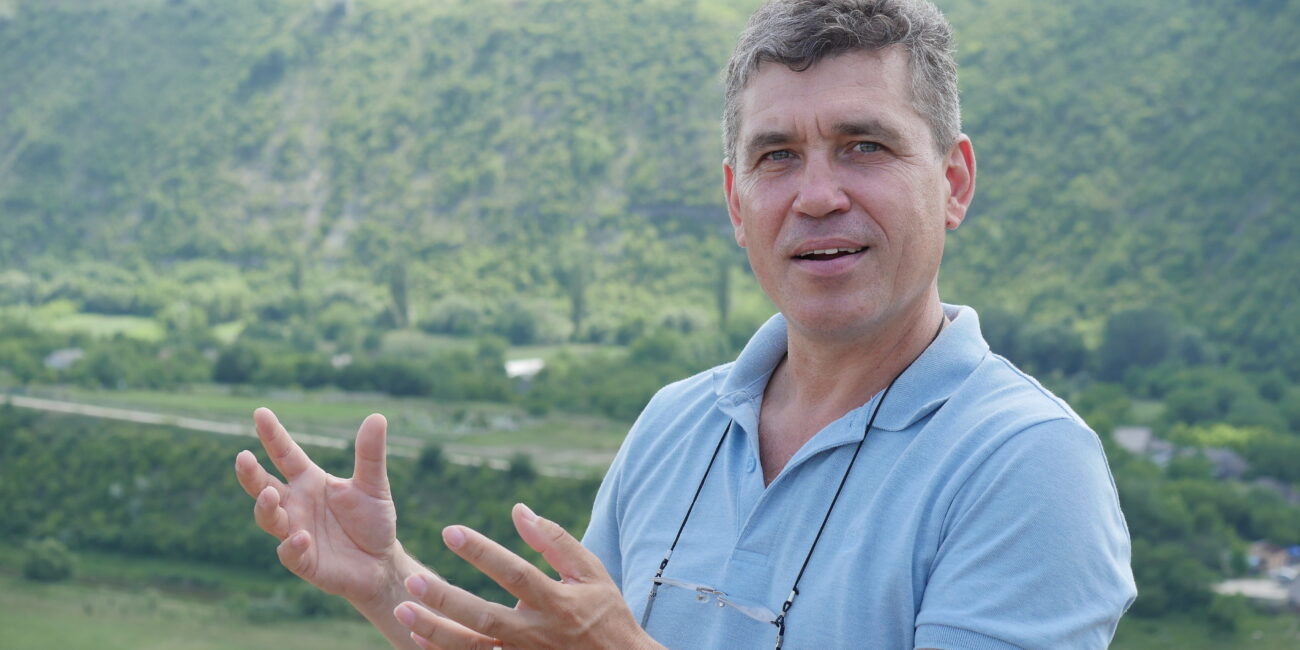
It’s early summer in Moldova, and the cherries are already ripe. We pick and pop them into our mouths as we climb the hill to Old Orhei’s cave monastery, one of the landmarks of the Republic of Moldova.
It’s an unusual sight—the sloping bank of the Răut River emerging from a perfectly flat field seems almost man-made. However, it is a natural reminder of how landscapes evolve. You can find perfect seashells on the limestone bank in a country with no coastline, much like on a sandy beach. Millions of years ago, the Răut River was part of the ancient Sarmatian Sea, just like the lands of today’s Moldova.
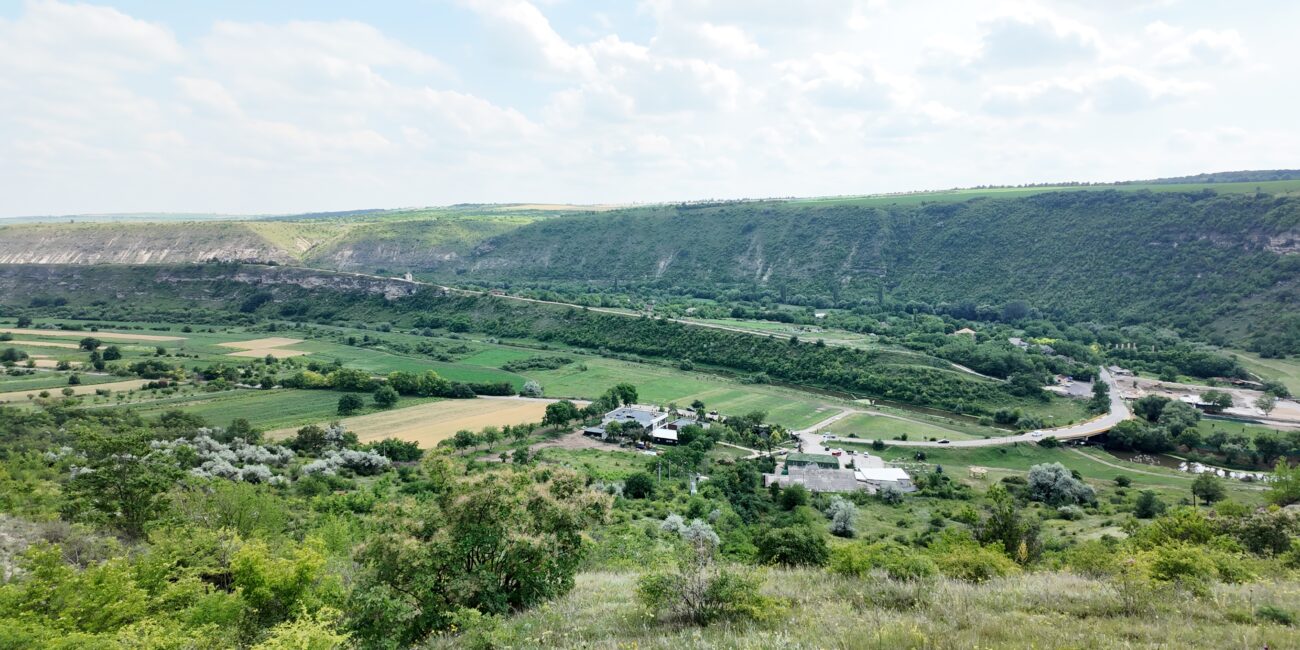
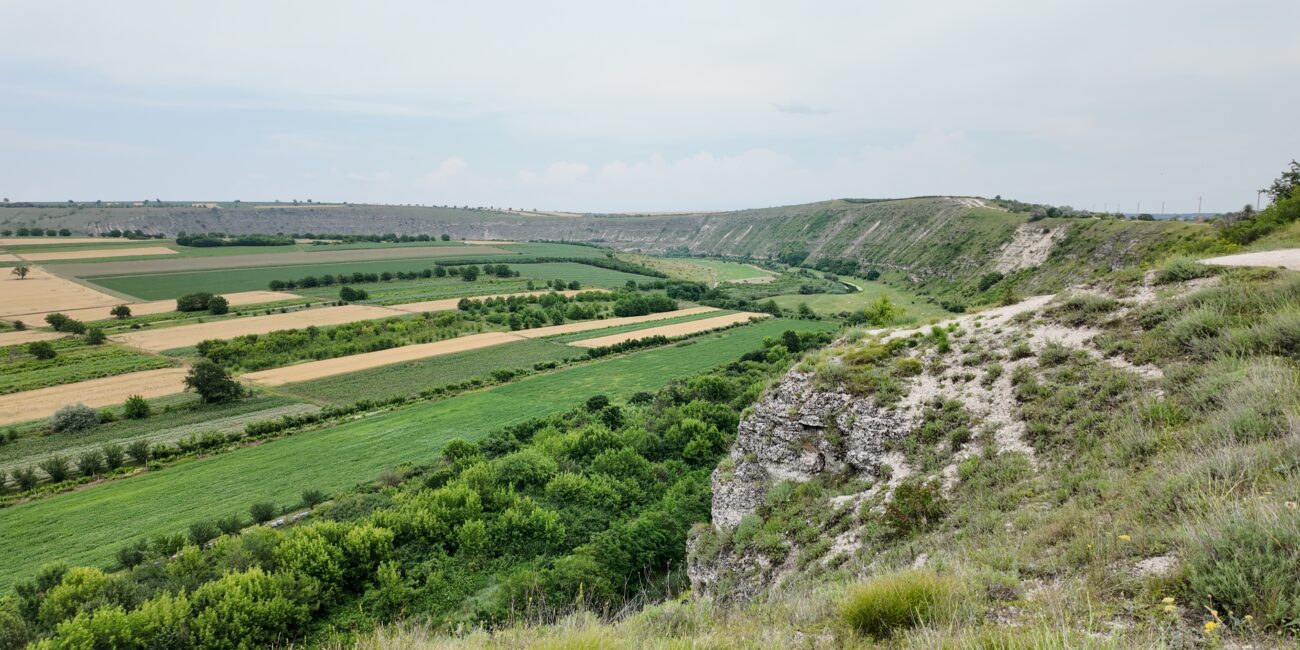
Professor Sergiu Musteață leads us along a hidden path lined with cherry trees from an old student’s base. Researchers have been excavating this area for decades, as the unique landscape reveals layers of settlements dating back to prehistoric times.
“When we come here with students, we usually clean the neighborhood and cut the grass first,” Prof. Musteață says, pushing branches away from the path. If only tourists knew about this shortcut hidden in nature.
Musteață is a renowned historian from Moldova and a professor at the Faculty of Philology and History at “Ion Creangă” State Pedagogical University.
Old Orhei has been one of his main research focuses since 1996. “I know everyone in Orheiul Vechi! (Romanian version of the name),” he laughs. He also knows all of the approximately 300 caves in the area and has personally researched many of them.
Professor Musteață has worked to educate locals about the history of this special place and how to develop tourism businesses. He has also guided them in creating guesthouses and writing proposals for funding to build water closets in their homes.
“We have organized 20 years of summer camps for the locals during the excavations, including summer schools for local kids. Lots of students, both locals and internationals, participated!”
Regarding all the efforts, only a few locals have made a known name in the tourism sector. “I don’t know why. There is not so much interest. It should be the most prominent place among tourists,” says Musteață.
Unlike other visitors, we simply walk by the Peștera cave monastery, the main tourist attraction of Old Orhei. The current underground tunnels date back to 1820. However, the caves in these limestone hills have existed since the 14th century. Orthodox monks sought and found solitude and a place for spiritual retreat in this isolation.
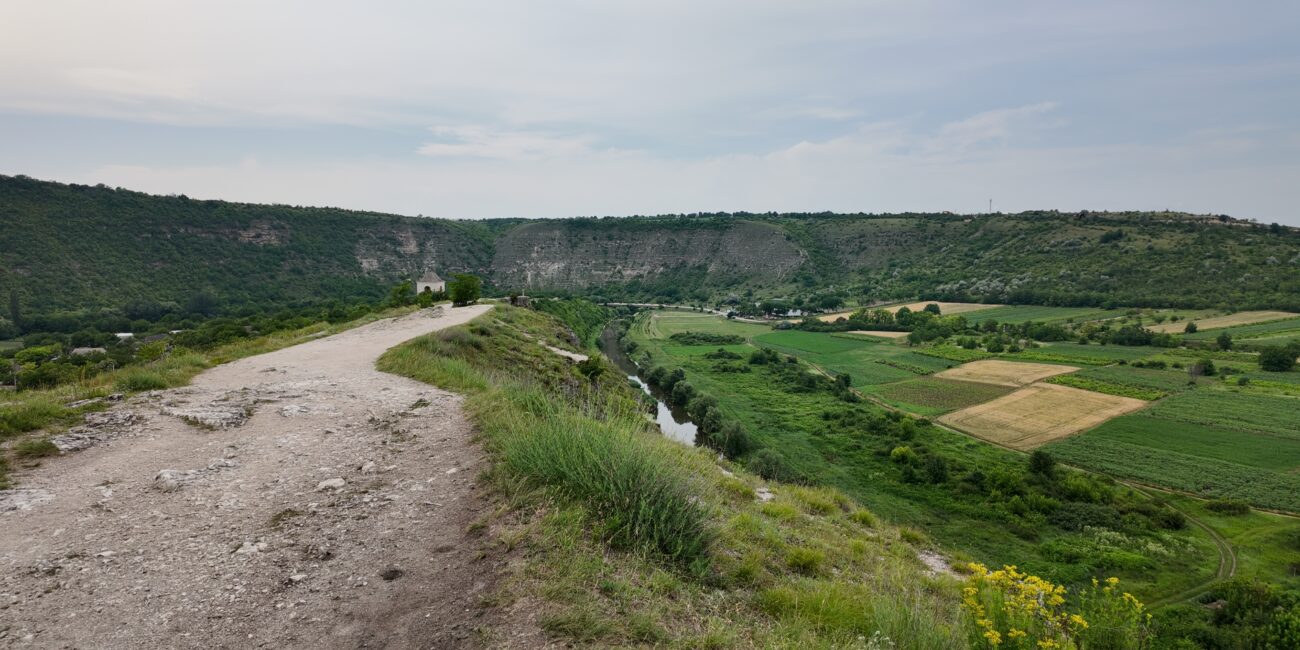
“There is another cave monastery here. Locals know about it, but only a few tourists will visit it,” says Musteata. This is where we are heading.
We walk on the bank, passing through the Church of Ascension of St. Mary. The view of the valley and fields is breathtaking. The professor then turns to the left. There is an almost unrecognizable road downhill from the bank. Slippers aren’t a good idea, but we climb down the limestone bank to the grazing land with cows.
After walking, we climb again to another unknown cave monastery of Old Orhei, built above the Răut waters. There isn’t a single soul up there, but it is full of human signs. Monks isolated themselves here.
Another cave monastery
The church’s facade is engraved a Slavonian writing: “This church was built by the slave of Bosie, pircalab (Chief Magistrate) of Orhei, together with his wife and his children, to cherish God, to forgive his sins.”
The professor shows us around—where the monks would sleep, where the fireplace was—all the caves are in remarkably good shape, with few signs of dripping rocks.
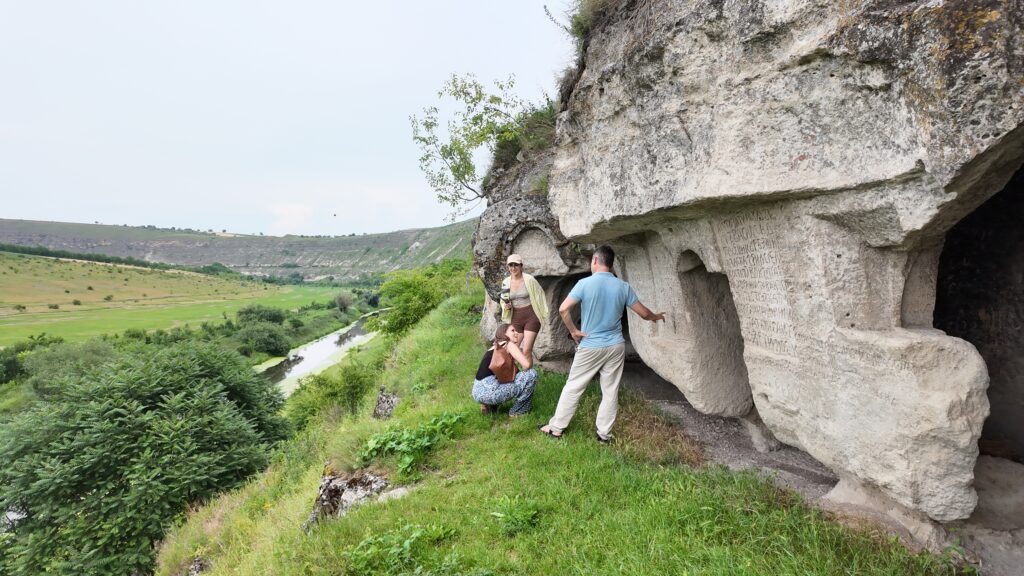
“It’s a bit too far and difficult to access. That’s why people don’t know much about it and wouldn’t end up here,” Musteață says.
But that might have saved the authenticity, while the other historical sites in Old Orhei face the problem of random preservation efforts. These are not conducted according to the law to preserve the authentic look of the place.
Asphalt led to an investigation
Last year, the road from Butuceni village in the Cultural-Natural Reserve was asphalted, which led to an investigation by the Ministry of Culture. It ruined the village’s authenticity but gave locals more logistical freedom.
Climbing on the bank, we notice a brand new red-roofed dwelling that should not have been built in the reserve from a logical viewpoint. But there it is, like the newly constructed path to the Pestera cave monastery and the asphalted road in Butuceni village.
It is one of the reasons stopping Moldova to have its first very own UNESCO heritage sites.
“There is too much industrialization in a place where authenticity is worshipped,” says Sergiu Musteață. The Old Orhei Reserve has been on the UNESCO tentative list for years but is not moving forward soon. “I don’t think there is much hope at the moment,” Musteață admits honestly.
It makes him sad. He and other researchers have worked for years to put the place on the world map as a part of humanity’s historical cradle.
“The landscape and the density of settlements since prehistory is special. You can see the changes in this part of the world, moving from East to West. The Golden Horde, the Islamic period, Christians—there is a huge variety of artifacts describing how people lived in this area,” explains Musteata.
Mankind has always loved this region
The surroundings have been populated since the Paleolithic era due to good location—the river protects Old Orhei from three sides. The land is suitable for agriculture, and the water is close.
Archaeological findings suggest that the Getians built few fortresses and settlements in this region during the 4th to 3rd centuries BCE, taking advantage of the natural fortifications provided by the rocky outcrops and riverbanks.
In the 14th century, Old Orhei became part of the medieval state of Moldova (Țara Moldovei) after the collapse of the Golden Horde, a Mongol-Tatar state which controlled this territory as well.
After the Tatar period (12th-14th centuries), an Orthodox Christian community developed during medieval times. Political stability and the protective embrace of nature made Old Orhei an important center. Moldovan hero and ruler Stephen the Great (ruled 1457-1504) appointed his uncle to rule there. The area was fortified with strong defensive walls and towers.
Life in Old Orhei slowly started to fade in the 17th century. The administration moved to neighboring New Orhei, and gradually, the monastic community began to disappear. The last monks are believed to have left Old Orhei at the beginning of the 19th century. By this time, many monastic communities in the region faced significant challenges due to political changes, invasions, and pressures from the expanding Ottoman Empire. The decline in monastic life at Old Orhei was part of a broader trend affecting many religious sites in the region.
At the beginning of the 20th century, a new Virgin Mary Church was built on the top of the bank near the cave monastery to revitalize the area’s spiritual significance. It serves as a symbol of Old Orhei’s continued religious heritage, even after the original monastic community had dispersed.
An undiscovered country
Life has moved on. The Orthodox Church still holds significant power in the small country of Moldova, but only traces of the glory the church once had in Old Orhei remain.
Even though the Soviets started excavations in the region in the 1940s, they also disrupted the old sites, building a brand new road through the Golden Horde citadel, and cutting it in half. “A historic road should go around the citadel. It’s completely doable,” says Musteață.
Sergiu Musteață feels that many of Moldova’s stories remain untold, even the story of such a landmark as Old Orhei. “It is frustrating. We need to tell our story!,” suggests Musteață. The country itself should put Orhei at the top of the list of tourist destinations in Moldova, the professor thinks. After all, it’s the most important tourist site in the country, he adds. “It should be declared a state priority, a national strategy. People working in this field in Moldova need to understand that the basis of tourism is history and heritage.”
That is yet another reason why Moldova’s Old Orhei is not on the UNESCO list. “Our country overall is underrepresented,” says Musteață.
UNESCO answered that they are not in a position to comment on what is missing for Old Orhei to receive the UNESCO heritage site title.
Moldova first proposed Old Orhei as a UNESCO heritage site in 2008 but withdrew its nomination the following year.
In September 2015, Moldova submitted a new version of the nomination dossier as ‘Orheiul Vechi Archaeological Landscape’, a cultural site. Following the evaluation process and the recommendation by the International Council on Monuments and Sites, Moldova withdrew the nomination again.
Luckily, Moldova appears on the UNESCO list as part of a group of countries with the Struve Geodetic Arc. It is a chain of survey triangulations stretching from Hammerfest in Norway to the Black Sea, spanning ten countries and over 2,820 km. The listed site includes 34 points across all ten countries, one of which is in Moldova. Nevertheless, Moldova is eager to earn its very own World Heritage Site title.


Leave a Reply